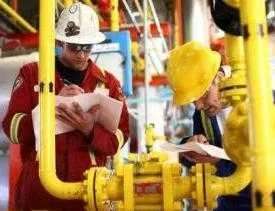Description
Course Name: Diploma in Industrial Safety
Course Id: DIS/Q0001.
Education Qualification: 10th Pass.
Duration: 370 Hrs.
How You will Get Diploma Certificate:
Step 1- Select your Course for Certification.
Step 2- Click on Enroll Now.
Step 3- Proceed to Enroll Now.
Step 4- Fill Your Billing Details and Proceed to Pay.
Step 5- You Will be Redirected to Payment Gateway, Pay Course and Exam Fee by Following Options.
Card(Debit/Credit), Wallet, Paytm, Net banking, UPI and Google pay.
Step 6- After Payment You will receive Study Material on your email id.
Step 7- After Completion of Course Study give Online Examination.
Step 8- After Online Examination you will get Diploma Certificate soft copy(Scan Copy) and Hard Copy(Original With Seal and Sign).
Step 9- After Certification you will receive Prospect Job Opportunities as per your Interest Area.
Online Examination Detail:
- Duration- 120 minutes.
- No. of Questions- 60. (Multiple Choice Questions).
- 10 Questions from each module, each carry 10 marks.
- Maximum Marks- 600, Passing Marks- 40%.
- There is no negative marking in this module.
| How Students will be Graded: | ||
| S.No. | Marks | Grade |
| 1 | 91-100 | O (Outstanding) |
| 2 | 81-90 | A (Excellent) |
| 3 | 71-80 | A (Very Good) |
| 4 | 61-70 | B (Good) |
| 5 | 51-60 | C (Average) |
| 6 | 41-50 | P (Pass) |
| 7 | 0-40 | F (Fail) |
Benefits of Certification:
- Government Authorized Assessment Agency Certification.
- Certificate Valid for Lifetime.
- Lifetime Verification of Certificate.
- Free Job Assistance as per your Interest Area.
Syllabus
Diploma in Industrial Safety
Principles of Industrial Safety
Concept, Need and importance of Industrial safety, Philosophy of accident prevention, safety, Meaning, objectives and importance of ergonomics-fitting men with machines and machines with men-human activities and control-work- place designs and physical environment, Causes of Industrial accidents –unsafe acts and conditions – multiple causation, Cost and consequence of accident-types of economic losses-injuries and fatalities, Safety and Productivity, Welfare and Safety, Safety Movements in some industrially advanced countries-Safety movement in India, Safety Movements in some industrially advanced countries-Safety movement in India.
Industrial Toxicology, Environment Pollution and Occupational Health
Basic human Physiology and Pathology in relation to work- physiology and psychology of work – Stress factor – Oxygen consumption, Working environment-man and the environment including ecology and ecosystems Elements of working conditions i.e. noise, ventilation, lighting, temperature, humidity etc, and effects on safe performance in industry, Industrial toxicology-occupational diseases by certain chemicals, physical and biological agents- emergency antidotes, Environmental pollution-Definition of pollution- pollution of water resources land and air, catastrophic pollution affecting surroundings-basic approach for prevention and control of different types of pollution.
Industrial Hazards and Accidents
Principles of accident prevention related to (a) machine guarding, hand tools, portable electrical apparatus, portable ladders, acetylene cylinders; (b) fire and explosions (c) Protective measures including good housekeeping, working clothes, personal protective equipments, Mechanical hazards related to cutting and tearing, sheering, crushing, breaking welding, staining etc. machine guards and devices-precautionary measures, Chemical hazards- Reactors, decomposition, association, dissociation and resultant hazards including fires, explosion- prevention and control. Building and Construction – Hazards related to foundation and excavation, walling, lift well, demolition, roofing prevention.
Safety Management and Organization
Safety management at different levels. Basic approaches to safety management including work centered, employee centered and work-cum-employee centered approaches, site selection, layout etc. Behavioural sciences and safety – Past and current factors influencing safe behavior, Planning for Safety Management, Meaning and basic considerations, Formulation of Safety programme-meaning content and nature how to make it acceptable, Problem analysis and decision making, Responsibilities of Safety department, Fire Protection department, Medical department, Maintenance department, purchasing department in Safety Management.
Safety Statistics and Accidents Inspection
Definition, application and limitation of statistics- Explanations, sample, parameters, statistics, Formation of frequency distribution – diagrammatic and graphical representation, Measures of central tendency and dispersion – Moments including P1P2 Skewness and Kurtosis and their measures and co-efficients, Probability and probability distribution : Meaning of probability and explanation of various terms used in its definition- Addition and multiplication laws of probability- Random variable and expectation-Binomial, Poisson and normal distribution and their main properties. Safety check list and safety permit system-their need and usefulness.
Safety Engineering
Laws and Regulations – Relevant Provisions of Factories Act and Rules, Indian Electricity Act and Rules, Explosive Act and Rules, Gas Cylinders Rules, Safety in Workplace – Plant / Work area Design – Hand tools and Portable power tools – Manual and Mechanical Material Handling – Ergonomics – Machine Guarding – Storage of Materials, Electrical Safety – Safety in Electricity Industry – Types of Electrical Hazards – Energy Isolation –Industrial Illumination, Special Precautions – Working at Height – Working in Confined Spaces – Work Permits for Working at Height and Working in Confined Spaces.






